Mastering how to cut corn off the cob can seem intimidating, but by following my simple tips, you will learn how quick and easy it really is. Read on and start enjoying sweet, juicy corn all summer long.
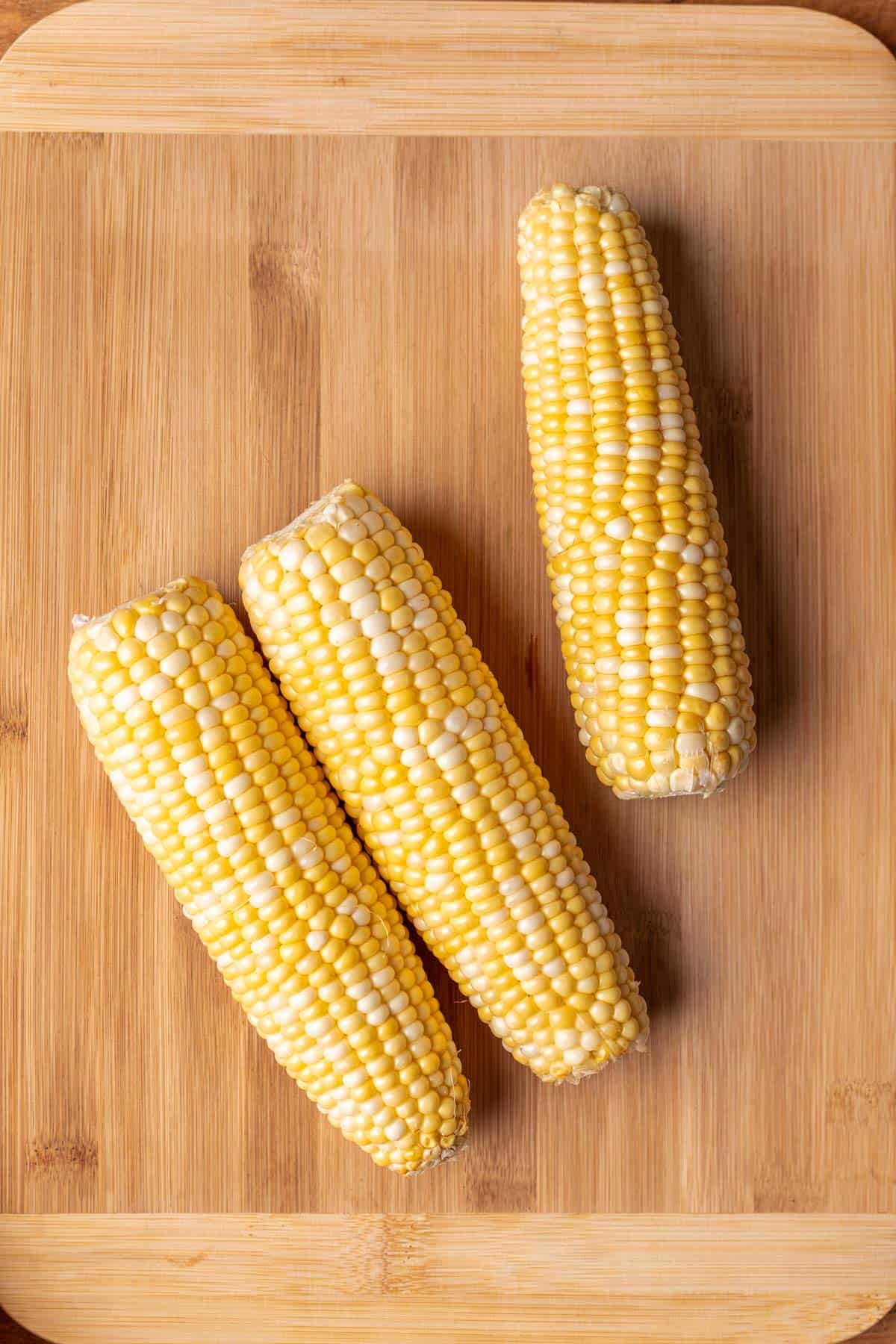
Jump to:
📋 What is Corn on the Cob?
Corn on the cob is an expression to describe an ear of corn or maize with the kernels still on the corncob. It's part of the grass family (Poaceae) and is considered both a vegetable and a grain. Other foods in the Poaceae botanical family include rye, barley, oats, rice, and wheat.
Americans regularly enjoy eating boiled, steamed, roasted, or grilled corn on the cob, but there are several instances where knowing how to cut corn off the cob is both useful and necessary.
⁉️ What You'll Need
- Sharp chef's knife - One of the most important tools in the kitchen. It may be counterintuitive, but using a small knife or a dull knife is going to make it more likely that you will cut yourself and have difficulty cutting your corn uniformly. A good chef's knife should glide through whatever you are cutting without resistance and feel comfortable in your hand.
- Cutting board - The larger the better! Using a small cutting board is going to make your workspace feel crowded and take you longer to prep.
🔪 How to Cut Corn Off the Cob
- Remove the corn husk. Although it is possible to buy corn in grocery stores with the husks removed, it is more common (and cheaper) to find it still wrapped in the green outer husk.
The husk is simply the shell that protects the corn while growing on the crop. To remove the husk, start by separating the husk at the top and pulling off the leaves by pulling down to the bottom of the ear.
You'll notice there are silky tassel-like strands inside the husk leaves. Remove these strands as well. Repeat until the ear of corn is free of the husk. - Rinse the ears of corn. Rinse the corncobs under cool water and gently rub away any debris or remaining silky strands.
- Cut off the ends of each ear. If you shucked your own corn, you'll notice the bottom of the ear has a tough stem. Chop both ends of the corn to create flat ends.
- Lay the corn on the cob flat, horizontally, on a cutting board.
- Cut one side of kernels off the corncob. The corncob in the center of the ear of corn is very hard to eat and hard to cut through. The key is to cut as close to the corncob without trying to cut through it. This will ensure you shave off as much of the corn kernels as possible.
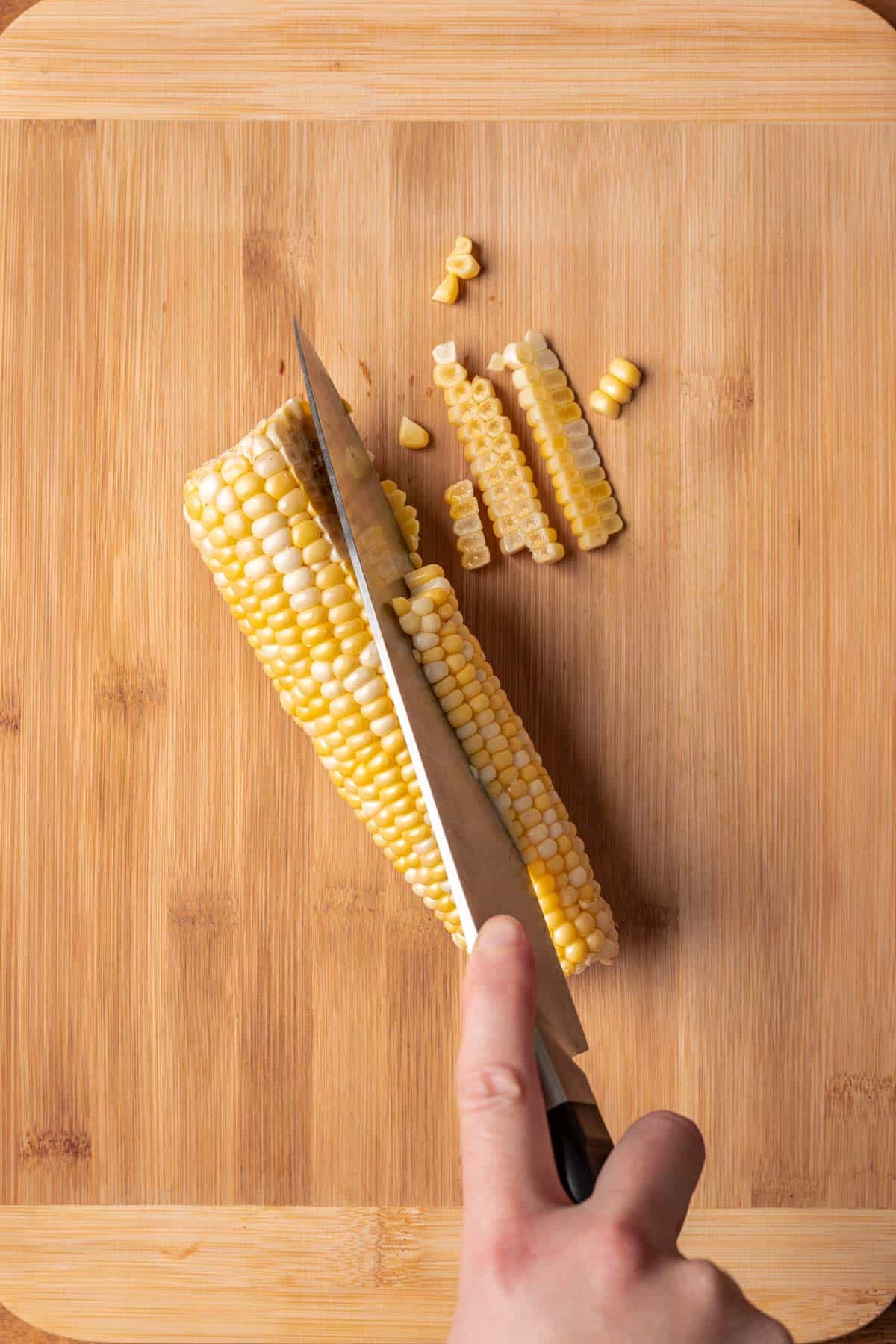
- Flip the corn on the cob so that it is laying on the freshly cut flat side. Cut off another side of the corn.
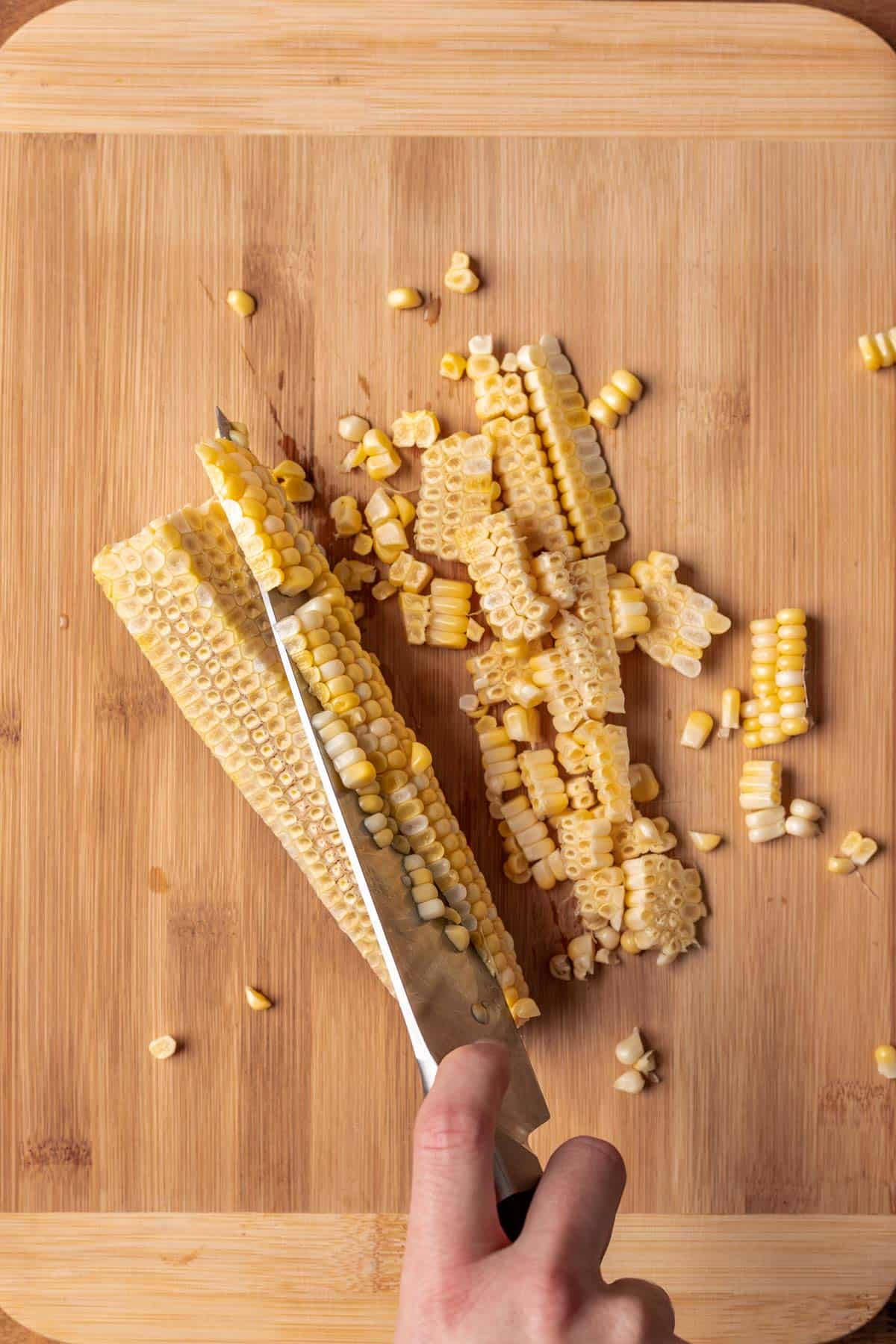
- Repeat until all corn is removed and you have a square shaped corncob remaining.
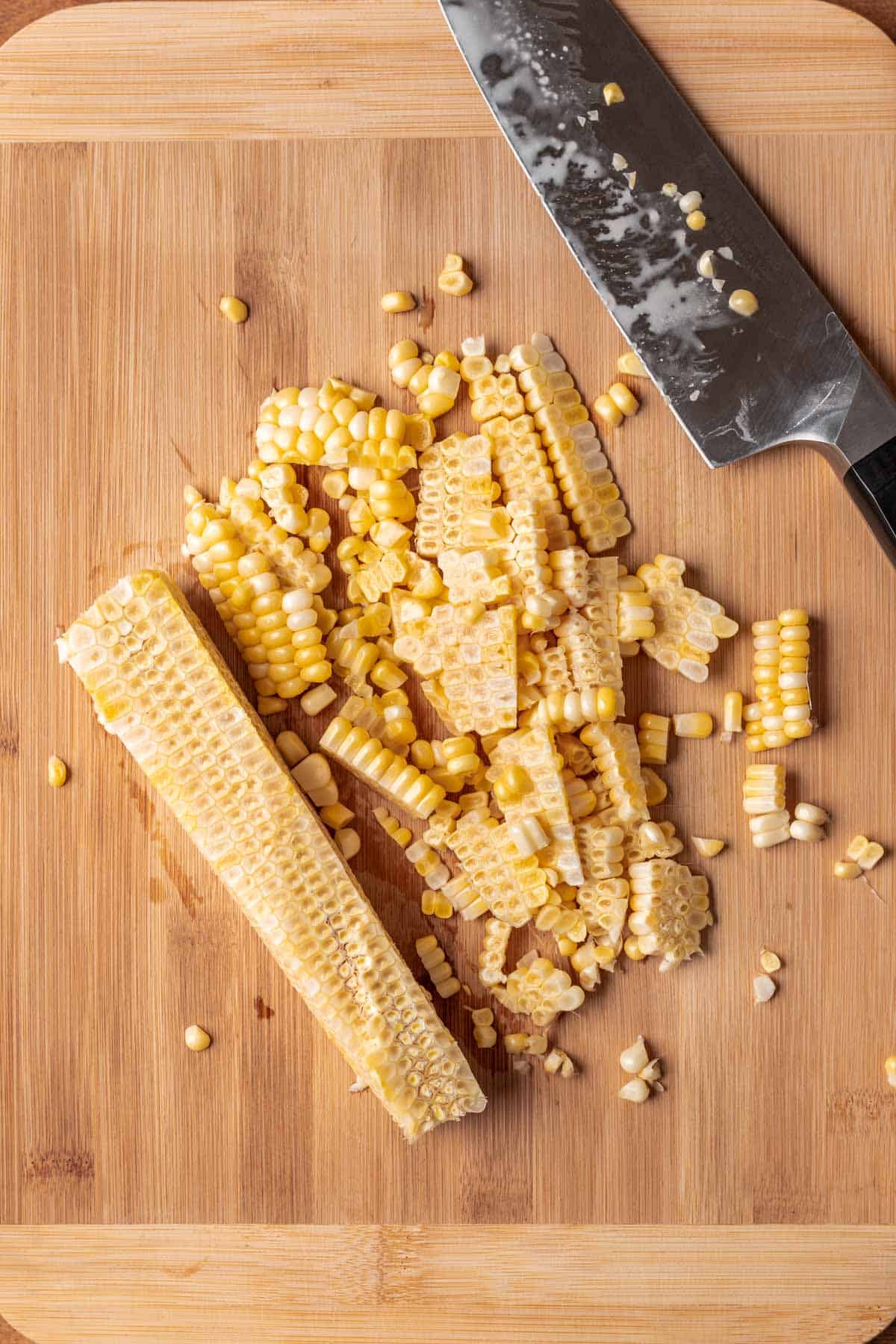
❄️ How to Store Corn
To store whole, uncut corn: Wrap the corn tightly in saran wrap or in an airtight zip top bag with as much air removed as possible. If possible, store the corn in the husks as well. This will prolong the corn's freshness by preventing it from drying out. Plan to use refrigerated uncut, raw corn within 3 days.
To store cut corn kernels: Similar to corn on the cob, cut corn kernels should be stored in an airtight container or in a sealed zip top bag in the refrigerator. Plan to use within 3 days for best results. If you know you won't be able to eat the corn within three days, freeze it for up to 6 months.
🍽 How to Cook Corn
There are four popular methods when it comes to cooking corn at home: boiling, steaming, roasting, and grilling. Here's a brief overview on each method.
- How to boil corn cobs: Bring a pot of water to a boil, then submerge the shucked, whole ears directly in the boiling water. Boil for 3-5 minutes, or until the corn kernels are tender. Remove the ears of corn from the boiling water and serve while warm.
- How to steam corn cobs: Using a steamer basket over a pot of boiling water or a pressure cooker like the Instant Pot, steam the corn on the cob for anywhere between 5 to 15 minutes, depending on how soft you want your corn. Note that a pressure cooker will steam the corn faster and will only need a 1 to 2 minute cook time.
- How to roast corn: Roasting corn is great because you can do this with whole ears of corn or corn kernels. Learn my favorite oven roasted method in my Skillet Roasted Corn Kernels recipe or make roasted corn succotash to go with air fryer crab cakes!
- How to grill corn: Place the ears of corn directly on the grill and grill for 15 to 20 minutes, turning occasionally. This will help each side of the ear get a nice char on it!
🔍 FAQs
Yes! Corn kernels can be cut in the method above, before or after cooking. Cutting corn off the cob before cooking is best when using it in a roasting recipe.
You can, but it is not necessary if you are planning to roast it or cook it right away. The only time I recommend blanching the ears of corn before cutting it off the cob is when you plan to freeze it directly afterwards. This will ensure it stops the enzyme action that causes vegetables to lose their flavor and texture.
The easiest way to cut corn cobs in half actually doesn't require a knife at all. Simply hold the ear of corn at both ends (after shucking) and snap the corn cob in half. If you prefer to cut the corn cob in half, or need to cut it into quarters, you can do so with a very sharp knife.
💭 One More Tip
Pick fresh corn! The best sweet corn will have a bright green husk, be wrapped tightly around the ear, and be a bit damp feeling. Avoid ears with noticeably dry husks or ears with holes in the husks.
While grocery shopping, carefully peel away the top of the husk to check the corn inside. Look for fresh corn without any brown pieces or slimy, white spots.

If you found this helpful, I'd love to know! Tag @yourhomemadehealthy on Instagram or leave a comment with a rating and some feedback at the bottom of this page!
🍴More Cooking Tips

How to Cut Corn Off the Cob
Equipment
Ingredients
- 1 corn on the cob
Instructions
- Remove the corn husk. Although it is possible to buy corn in grocery stores with the husks removed already, it is more common (and cheaper) to find it still wrapped in the green outer husk. The husk is simply the shell that protects the corn while growing on the crop. To remove the husk, start by separating the husk at the top and pulling off the leaves by pulling down to the bottom of the ear. You'll notice there are silky tassel-like strands inside the husk leaves. Remove these strands as well. Repeat until the ear of corn is free of the husk.
- Rinse the ears of corn. Rinse the corncobs under cool water and gently rub away any debris or remaining silky strands.
- Cut off the ends of each ear. If you shucked your own corn, you'll notice the bottom of the ear has a tough stem. Chop both ends of the corn to create flat ends.
- Lay the corn on the cob flat, horizontally, on a cutting board.
- Cut one side of kernels off the corncob. The corncob in the center of the ear of corn is very hard to eat and hard to cut through. The key is to cut as close to the corncob without trying to cut through it. This will ensure you shave off as much of the corn kernels as possible.
- Flip the corn on the cob so that it is laying on the freshly cut flat side. Cut off another side of the corn.
- Repeat until all corn is removed and you have a square shaped corncob remaining.
Notes
- To store whole, uncut corn: Wrap the corn tightly in saran wrap or in an airtight zip top bag with as much air removed as possible. If possible, store the corn in the husks as well. This will prolong the corn's freshness by preventing it from drying out. Plan to use refrigerated uncut, raw corn within 3 days.
- To store cut corn kernels: Similar to corn on the cob, cut corn kernels should be stored in an airtight container or in a sealed zip top bag in the refrigerator. Plan to use within 3 days for best results. If you know you won't be able to eat the corn within three days, freeze it for up to 6 months.
- Pick fresh corn! The best sweet corn will have a bright green husk, be wrapped tightly around the ear, and be a bit damp feeling. Avoid ears with noticeably dry husks or ears with holes in the husks. While grocery shopping, carefully peel away the top of the husk to check the corn inside. Look for fresh corn without any brown pieces or slimy, white spots.
Nutrition
Want more cooking tips like this delivered right to your inbox? Be sure to subscribe above and never miss a thing!

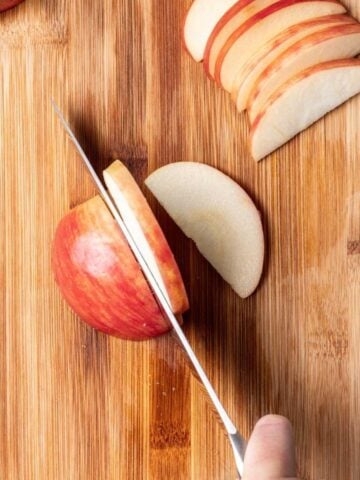
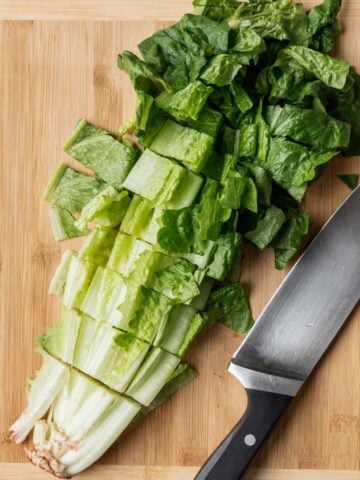
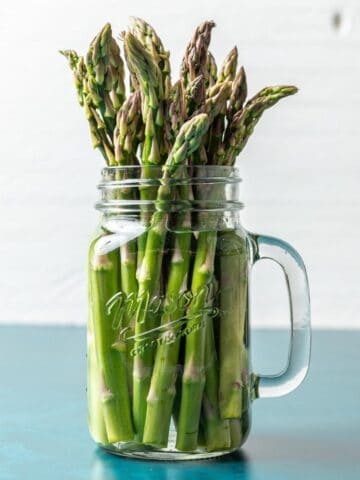

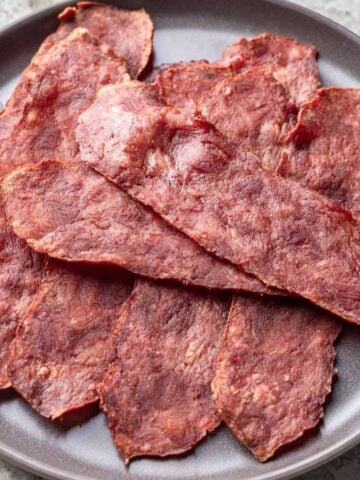
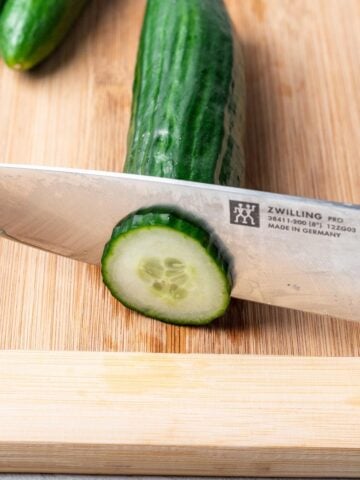

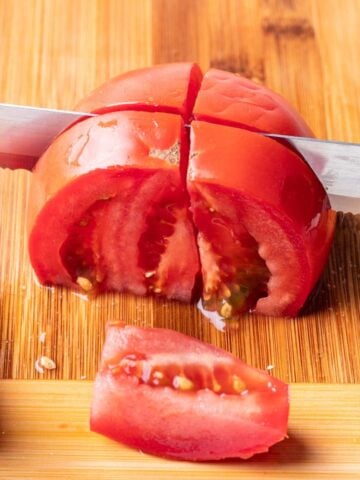
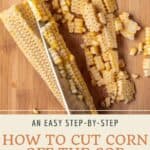
Comments
No Comments